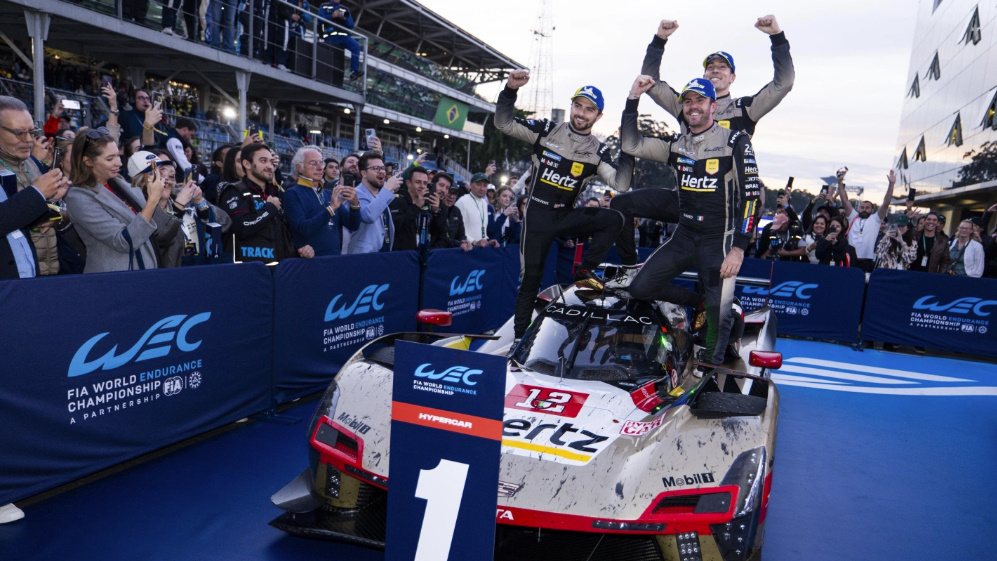WEC News: Cadillac and Porsche learn what BoP Socialism in racing means
The Cadillac V-Series.R and Porsche 963 have received the most significant Balance of Performance (BoP) penalties as the FIA World Endurance Championship (WEC) prepares for this weekend’s Lone Star Le Mans at Circuit of The Americas (COTA).
Announced in an official FIA bulletin (shown below – be sure to click for page 2) on Wednesday, the adjustments come in the wake of Cadillac’s dominant 1-2 finish at the previous 6 Hours of Sao Paulo event. The winning Cadillac now faces a substantial 19 kg increase in minimum weight, while the Porsche — which secured the overall podium with its No. 5 entry — has been hit with a 12 kg addition since the Brazilian round.
WEC_2025_D40_Hypercar_BOP_02092025These changes position the Porsche as the third-heaviest Hypercar in the field at 1,065 kg, trailing the unchanged Ferrari 499P and Toyota GR010 Hybrid, both set at 1,069 kg.
Power tweaks further level the playing field. The Cadillac loses 5 kW (equivalent to 6.7 horsepower) in first-stage power levels below 250 km/h, while the Porsche endures a steeper cut of 13 kW (17.4 hp). On a brighter note for both, second-stage power sees minor boosts: 0.9% for Cadillac and 2.5% for Porsche.
The Balance of Performance (BoP) system in sports car racing is likened to political socialism – that takes from the successful for working hard and gives to the slackers. If you win too much, you get reduced performance to ensure you get beat. Your incentive to work hard is diminished.
Visit Cuba or Venezuela to see just how bad it is where the government is run by socialists.
- Punishes excellence: Teams that innovate or perform well (e.g., Cadillac’s 1-2 finish) are penalized, potentially discouraging investment in superior engineering.
- Subjectivity: BoP decisions can seem arbitrary, leading to disputes among teams (e.g., Porsche’s 17.4 hp cut sparked debates about fairness).
- Inconsistency: Frequent tweaks can disrupt team strategies, as seen with BMW and Ford’s LMGT3 weight reductions, which some argue skew competition unpredictably.
Other Hypercars aren’t escaping scrutiny entirely. BMW’s M Hybrid V8 and Alpine’s A424 both suffer first-stage power reductions — 8 kW (10.7 hp) for BMW and 6 kW (8 hp) for Alpine — offset by power gain threshold increases of 1.4% and 1%, respectively. Toyota, still seeking its first win this season, sees minimal changes: a 1 kW (1.3 hp) drop in first-stage power and a 0.2% second-stage increase. Ferrari and Peugeot 9X8 avoid first-stage alterations but face second-stage reductions of 0.8% and 1.3%, respectively.
Weight adjustments in Hypercars are more subdued beyond Cadillac and Porsche. BMW sheds 2 kg, Alpine adds 1 kg, and the Aston Martin Valkyrie remains untouched in both weight and power, carrying over its Sao Paulo specification.
